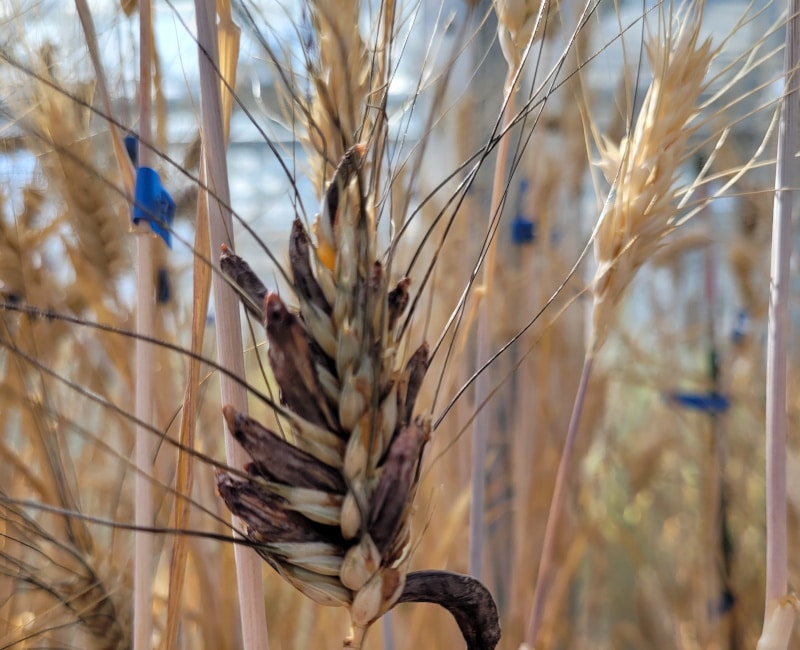Growers have always been early adopters of new technology. As a result, seed companies and industry stakeholders are concentrating resources on plant science innovations and technologies that conserve and protect the environment.
Canadian producers are innovative and keen on adopting new tools that will help them conserve and protect the environment, says Ian Affleck, CropLife Canada’s executive director of plant biotechnology. And supporting producers is a vibrant seed industry focused on delivering plant science innovations to grow more food on less land while protecting biodiversity and conserving natural resources.
“Farmers will adopt new technologies as soon as they’re available if it will help them run their farm sustainably. So, you’re seeing the companies we represent increasingly develop new traits related to environmental sustainability,” says Affleck. “We’re going to see more stress-tolerant crops in the future, whether it be heat stress, drought stress or water efficiency.”
This is particularly important in areas of Canada with a thin layer (six inches or less) of topsoil. “If we’re going to conserve [topsoil] and continue to be productive, adopting the newest practices and technologies — like no-till, which reduces erosion by an incredible amount — is the only way we’re going to be able to do that,” says Affleck.
“While there are other countries in the world, like Ukraine, that are blessed with a metre-and-a-half of topsoil, this is not the case everywhere and we have to be very careful with our resources going forward.”
In Canada, particularly across the Prairies, summerfallow cultivation has been a source of soil erosion and soil moisture and organic matter loss. Before the introduction of herbicide-tolerant canola, Brent Derkatch, director of operations and business for Canterra Seeds, remembers spending his summers pulling a cultivator over fallow fields on the family farm.
“Running steel through the field was one of the better tools, versus the chemistries and crop technologies that were available,” Derkatch says. However, the environmental price was steep.
“Because we were doing summerfallow instead of minimum- or no-till, a lot of that soil ended up in ditches or getting washed away with rain.”

For the past two decades or so, summerfallow acres across Western Canada have declined dramatically due to plant science innovations, such as the introduction of conservation tillage, minimum tillage machinery, herbicide-tolerant cropping systems and low-cost, broad-spectrum herbicides. From a soil health and erosion perspective, this is a good thing, Derkatch says.
Furthermore, according to the 2015 RIAS Inc. report prepared for CropLife Canada entitled The Value of Plant Science Innovations to Canadians, since 1990 decreases in summerfallow acres added 5.2 million tonnes of greenhouse gas reductions through carbon sequestration.
That same report analyzes the contributions plant science innovations have made to “support and advance sustainable agriculture through crop production improvement.”
For example, the study states producers would need to farm 50 per cent more land to grow the same amount of food without pesticides and plant biotechnology. “That’s about the size of New Brunswick, Nova Scotia and P.E.I. combined,” says Affleck.
In addition, plant science innovations allow farmers to drive over their fields fewer times, saving up to 194 million litres of diesel fuel per year. Furthermore, more farmers have been able to adopt conservation tillage because of modern plant breeding and crop protection products.
The report also outlines how plant science technologies are helping preserve land, protect biodiversity, conserve water, reduce greenhouse gases, mitigate climate change, and reduce the toxicity of crop protection products to the environment.
To communicate the report’s findings in a meaningful way to Canadians, CropLife Canada has created a website called helpingcanadagrow.ca, which summarizes details of the study.

“The public is looking evermore closely at how agriculture functions. We are good stewards of the land, but we have to do a better job explaining this, because the public doesn’t know,” Affleck says.
Particularly, the value of plant breeders and breeding programs to sustainable agriculture should also be recognized, says Todd Hyra, SeCan’s Western Canada business manager.
“People may not realize the impact wheat breeding programs have on environmental sustainability,” he says. “It’s taken for granted that plant breeders are working toward disease resistance, but the greater impact you have on protecting plants, the less reliance you have on chemical protection.”
And less need for chemical protection means fewer trips across the field and reductions in fossil fuel use and greenhouse gas emissions. Hyra advocates producers use all tools at their disposal to keep crops healthy and disease-free. However, at times, fungicides will not be enough to keep disease in check, which is when producers will need “strong genetic protection,” to help safeguard crops, he says.
Breeding insect tolerance into cereal varieties over the last 10 years has also conserved the environment as insecticide and fossil fuel use have decreased as a result. For example, producers are not spraying near as much insecticide for wheat midge now when compared with eight years ago, prior to the release of midge-tolerant wheat, says Hyra.
“The insect has been brought under control in many instances and has allowed beneficial parasitic wasps to keep [wheat midge] populations in check, so we haven’t had a major outbreak since midge-tolerant wheat has been used,” he says.
Other breeding efforts over the last six years have produced shorter-stature plant varieties such as Carberry, improving the speed and efficiency of harvest. Less material is put through the combine, less fuel is used by the machine, and stronger straw is facilitating more straight cutting, so less swathing is required, says Hyra. In addition, producers can harvest a mile or two per hour faster. “All of this has a huge environmental impact,” he says.
Shatter-tolerant canola varieties also permit more straight cutting, says Hyra. Both producers and the environment benefit from greater yields because “the plants mature fully in the field as well as not having that swathing operation, which would save fuel,” he says.

“That’s all just straight-up breeding, which helps improve the efficiency of farmers and reduces the environmental footprint,” says Hyra.
Maintaining diverse portfolios will also be important for seed companies now and in the future, says Derkatch, to offer producers options for varied crop rotations.
“We offer cereals, canola, pulses, special crops, corn and soybeans — it’s a broad portfolio. What I’m hearing more of in Western Canada is the importance of healthy crop rotations in managing disease cycles and weeds,” he says. “Seed companies need to focus on all crop types to be able to provide those solutions to farmers who want to maintain healthy and sustainable crop rotations.”










